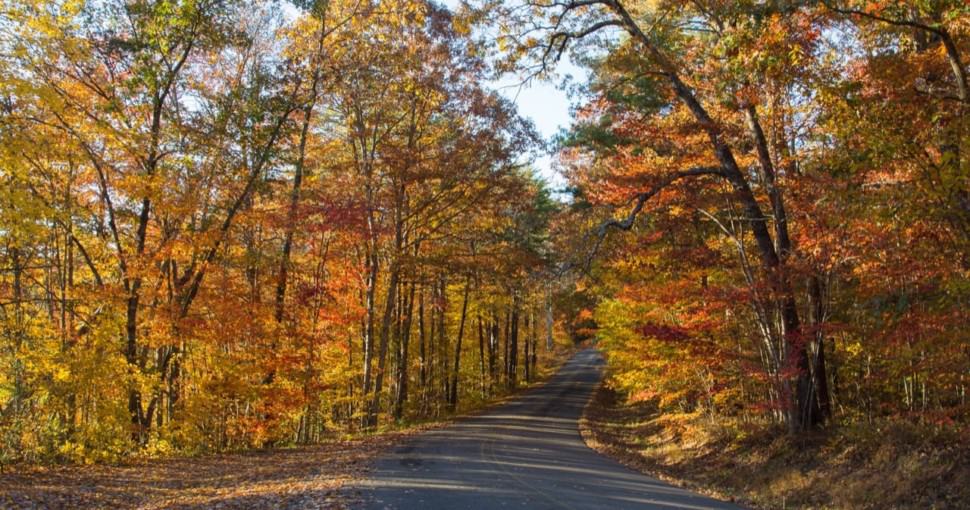The 30th largest state in the United States of America, Alabama, is home to a mesmerizingly diverse landscape. From hardwood uplands in the north and peaceful river valleys in the central region to fertile lands in the upper south and coastal plains on the southernmost point of the state, Alabama is truly a geographical masterpiece in southern America. It is surrounded by four states of Mississippi, Georgia, Florida, and Tennessee, with the Gulf of Mexico in the south.
Contents
- 1. Southern Longleaf Pine (Pinus Palustris Miller)
- 2. Red Maple (Acer Rubrum)
- 3. American Beech (Fagus Grandifolia)
- 4. Black Gum/Black Tupelo (Eucalyptus Ovata)
- 5. Cottonwood (Populus)
- 6. American Elm (Ulmus Americana)
- 7. American Hornbeam (Carpinus Caroliniana)
- 8. River Birch (Betula Nigra)
- 9. Southern Magnolia (Magnolia Grandiflora)
- 10. Osage Orange (Maclura Pomifera)
- 11. Eastern Redbud (Cercis Canadensis)
- 12. Sweetgum (Liquidambar Styraciflua)
- 13. Black Cherry (Prunus Serotina)
- 14. Black Willow (Salix Nigra)
- 15. Sugarberry (Celtis Laevigata)
- 16. American Holly (Ilex Opaca)
- 17. Red Mulberry Tree (Morus Rubra)
- 18. Common Persimmon (Diospyros Virginiana)
- 19. Sassafras (Sassafras Albidum)
- 20. Sycamore (Platanus Occidentalis)
- 21. White Oak (Quercus Alba)
- 22. Black Walnut (Juglans Nigra)
- 23. Pecan (Arya Illioniensis)
- 24. Flowering Dogwood (Cornus Florida)
- 25. Yellow Poplar (Liriodendron Tulipifera)
- 26. Buckeye (Aesculus)
- 27. Bitternut Hickory (Carya Cordiformis)
- 28. White Ash (Fraxinus Americana)
- 29. Eastern Hophornbeam (Ostrya Virginiana)
- 30. Sourwood (Oxydendrum Arboreum)
- 31. Eastern Hemlock (Tsuga Canadensis)
- 32. Box Elder (Acer Negundo)
- 33. Downy Serviceberry (Amelanchier Arborea)
- 34. Common Hackberry (Celtis Occidentalis)
The large geographic region that makes up Alabama emerged around 200 million years ago when the Super Subcontinent of the Pangean times broke apart, pushing a wide range of natural landforms from the Appalachian Mountains towards southern North America.
Related: 17 Evergreen Trees In Alabama
Northern Alabama is comprised of hardwood uplands divided into two regions; the Highland Rim and Cumberland Plateau. As we move towards the center of Alabama, we enter the Ridge and Valley Region. Below it is the Piedmont, the extension of the Appalachian foothills.
The south of Alabama is made up of coastal plains that meet the Gulf of Mexico at the lower border of the state. Alabama is known to have a warm and humid climate, which provides fairly ideal conditions for trees to prosper. This is why forested lands cover almost 70% of the Cotton State. The widespread greenery in the South Eastern State boasts of numerous native plants.
In this article, we go over the 34 most common trees in Alabama while touching upon the prime features of each.
1. Southern Longleaf Pine (Pinus Palustris Miller)
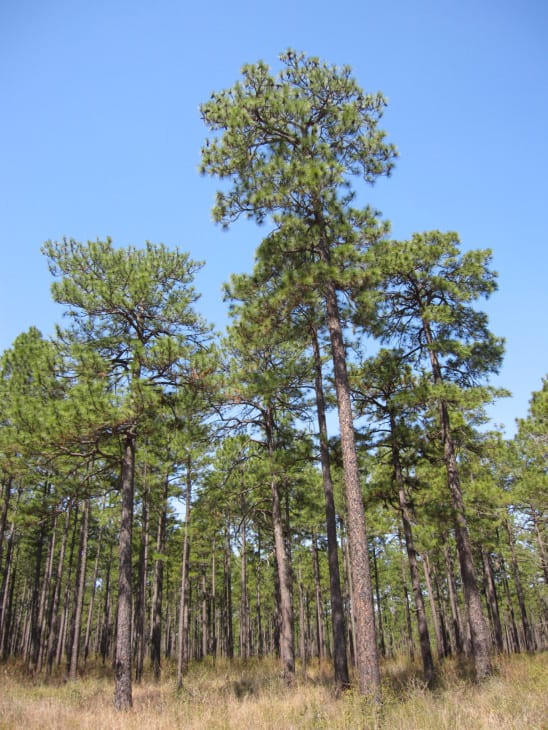
Native to Southeast, Southern Longleaf Pine trees are considered to be one of the most robust in the country. They were once spread all over the United States, but now they are mainly located in Alabama. The long thick bark of longleaf pines makes it mightily strong, enabling the plant to withstand strong winds, tornadoes, and all other harsh elements.
Southern longleaf pines have a significantly longer lifespan and are home to many animals, primarily the endangered species. The State Tree, Pinus Palustris Miller, grows inordinately tall, approximately 100-120 feet high, while its needle-like leaves go up to 18 inches. This is why woodlands covered by longleaf pines have a densely-forested look that very few trees offer.
Related: 6 Different Types Of Pine Trees In Alabama
2. Red Maple (Acer Rubrum)
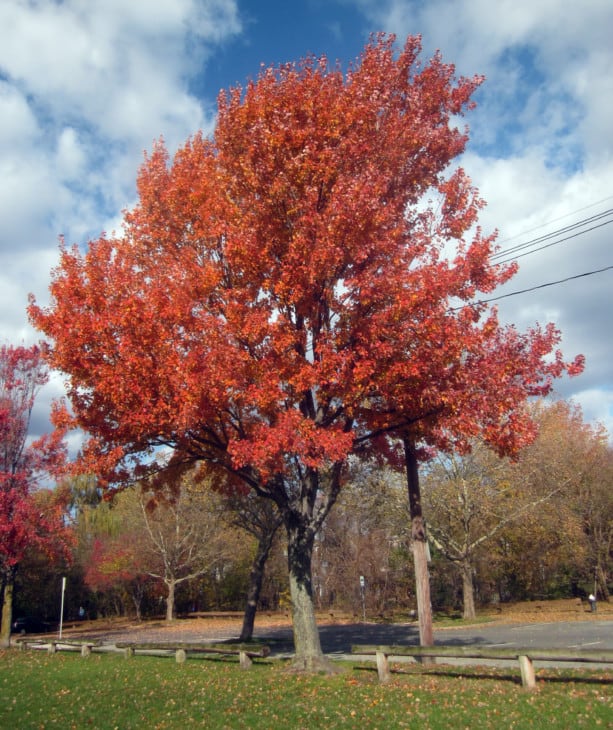
More commonly known as soft maple, white maple, swamp maple, and water maple, red maple trees are strewn throughout Alabama, particularly over shady slopes and wet woods. They have relatively short, petite trunks cloaked in 3-5 lobed, coarsely-toothed gorgeous yellowish-orange and red foliage. In other words, the bark runs continuously into the crown, getting masked by the leaves. Acer Rubrum produces softwood suitable for building a fire and landscaping. Its bark acquires a rough, unkempt appearance once matured.
Related: 6 Prevalent Types Of Maple Trees In Alabama
3. American Beech (Fagus Grandifolia)
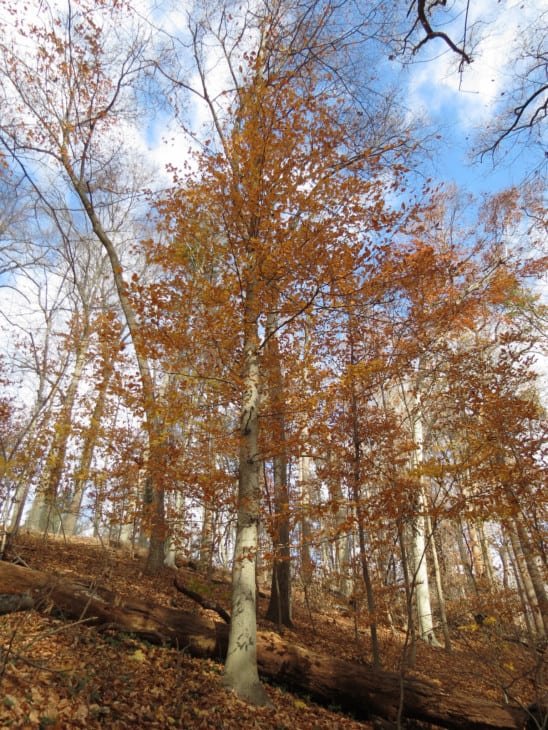
Typically 50-60 feet tall, the American Beech tree is abundantly found in the northern region of Alabama. It’s primarily known for its dotted, super smooth grayish bark that’s covered in bright green leaves. The leaves of an American beech tree have pointed tips with parallel veins running across the surface off a central medullar midrib. Each vein on an American beech tree leaf ends into a sharp separate point, giving the foliage a unique appearance that’s edged on all sides.
4. Black Gum/Black Tupelo (Eucalyptus Ovata)
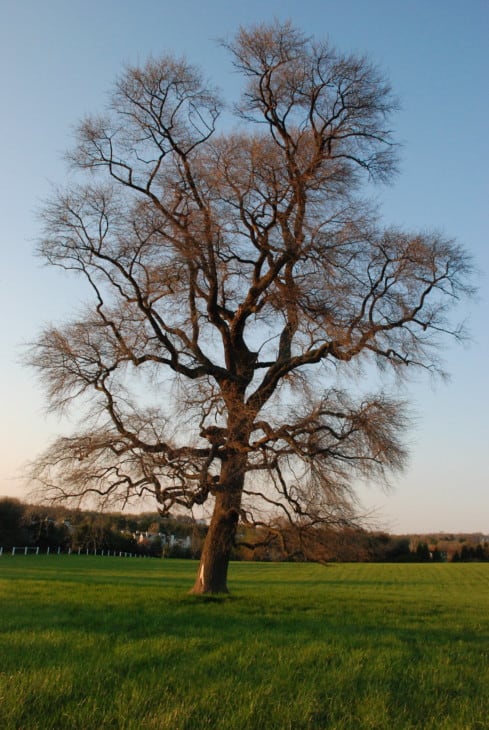
Also known as sour-gum, Pepperidge, and tupelo gum, the black gum tree is a medium-sized plant that grows about 40-70 feet tall. It’s primarily used for pulp now, but back in the day, its wood was utilized in making kitchen utensils. Black gum’s bark is grayish and turns strong and heavy once matured. It runs continuously up into the crown and becomes heavily wrinkled with age, forming a rugged appearance that looks like alligator hide.
Black gum trees are found throughout the Cotton State, but on the whole, they are native to Northern American, commonly seen in Texas and Florida. They have pretty ordinary-looking thick dark green, ovate leaves with a pointy apex. The leaves are also slightly dentate-meaning they have tooth-like edges- but in the case of black gum, the serrated points are not always vividly noticeable.
5. Cottonwood (Populus)
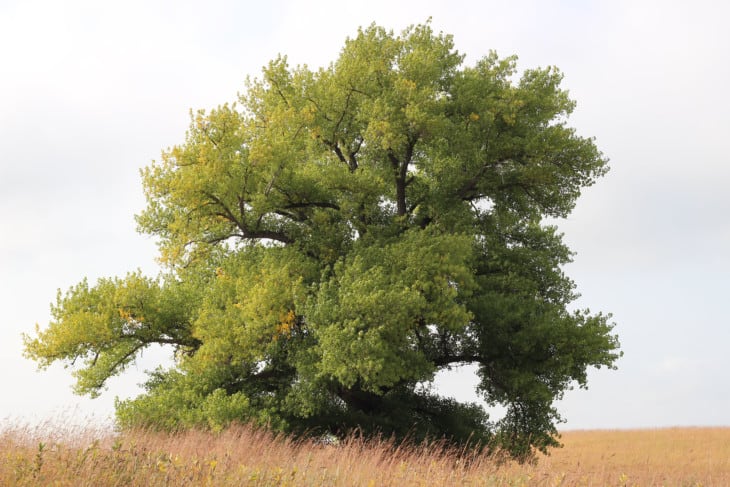
Two types of cottonwoods are found in The cotton state
- Eastern Cottonwood
- Swamp Cottonwood
Eastern Cottonwood
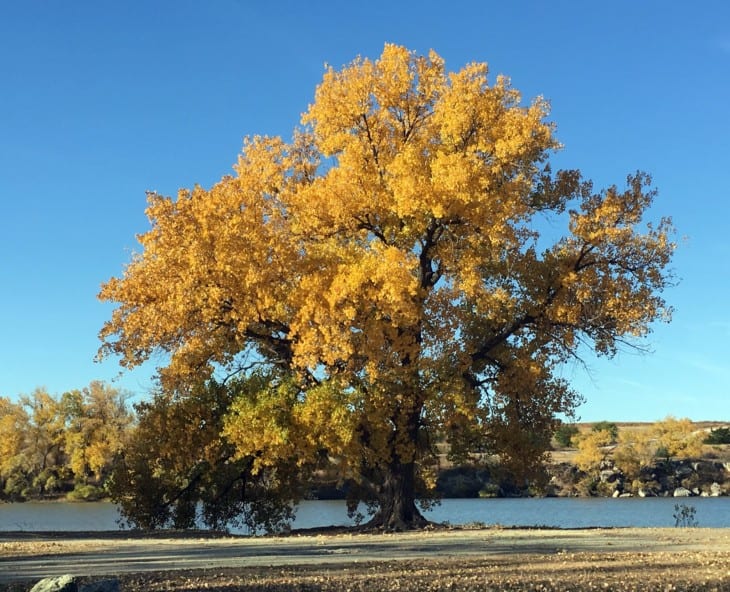
The eastern cottonwood tree typically grows up to 50-70 feet high with a furrowed ash-gray bark that runs straight up into the crown. It’s spread all across the cotton state, but mostly along riverbanks and large creeks.
The leaves of an eastern cottonwood plant are dentate, bright green oval-shaped, and pointed at the apex. While the leaves are thick, the bark is considerably soft that produces dark brown wood used for pulp and making crates. Popularly known as white wood, Eastern Poplar, or just cottonwood, eastern cottonwood trees prefer damp, fertile soil, which is why they are heavily concentrated in and around central Alabama, primarily in the Black Belt Praire.
Swamp/Black/River Cottonwood
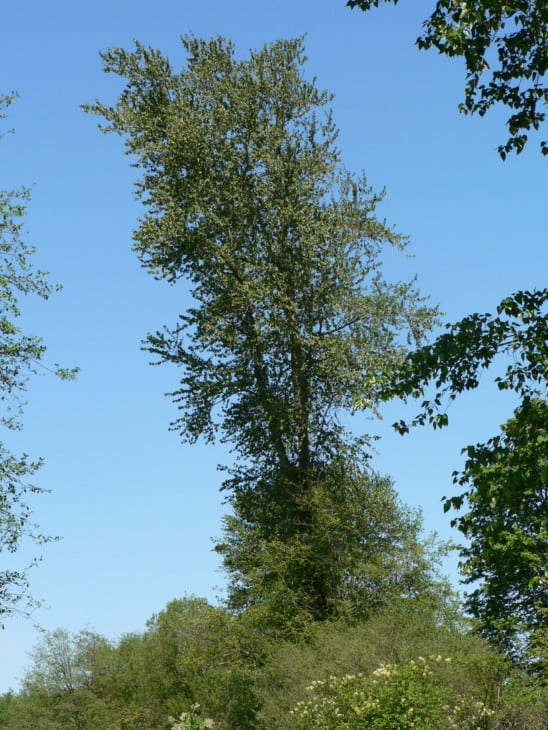
Supported by a solid reddish-brown crown-high rugged bark, a swamp cottonwood generally grows taller than its eastern counterpart, around 80-90 feet. Its simple dark green leaves are mostly broadly ovate with a subacute apex; they also tend to form a gradient of color, starting from a darker green at the top switching to a paler shade towards the bottom.
Swamp cottonwoods are found towards the southern end of Alabama, mainly in the lower part of the Mobile Delta. They also grow up in the Mississippi and Ohio drainages to Michigan and from Connecticut to Louisiana.
6. American Elm (Ulmus Americana)
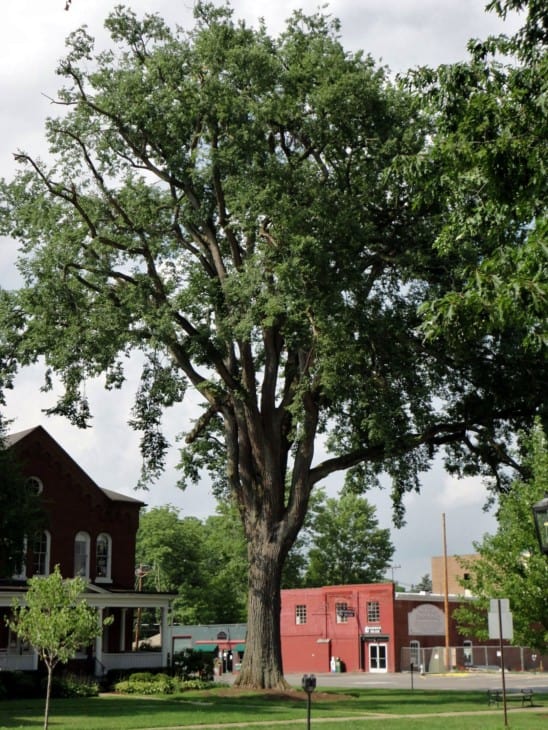
The American Elm is a large expansive tree, growing up to 60-100 feet tall and 120-140 feet high under ideal climatic conditions. Its robust grayish bark is divided into deep fissures, giving the plant and deeply wrinkled appearance. The leaves are simple, ovate bright green acuminated at the apex.
Ulmus Americana was readily found in much of America until around 1930, after which a fungal disease, Dutch Elm, ruined entire fields of the floral species. Now, it predominantly grows in the upper north of Alabama but is also scattered throughout the Cotton State. Wood acquired from this plant is hard and heavy, ideal for lumbering and making furniture.
7. American Hornbeam (Carpinus Caroliniana)
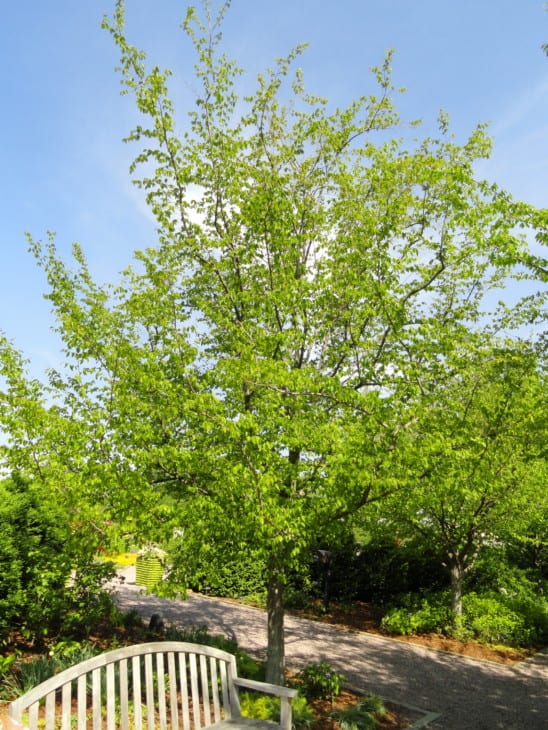
Colloquially called Bluebeech, Waterbeach, or Ironwood, the American Hornbeam is supported by a thin, mottled dark brown bark running into the crown. Its average mature height is 10-30 feet, and its leaves are simple, green-colored broad-oblong in shape with parallel venation.
Primarily found along streams and in wetlands, American hornbeams are pretty evenly strewn throughout the Cotton State. Nationwide, Carpinus caroliniana is considered native to most Eastern North America, growing from Minnesota going up to southern Ontario, Maine, eastern to south Texas, and northern Florida.
8. River Birch (Betula Nigra)
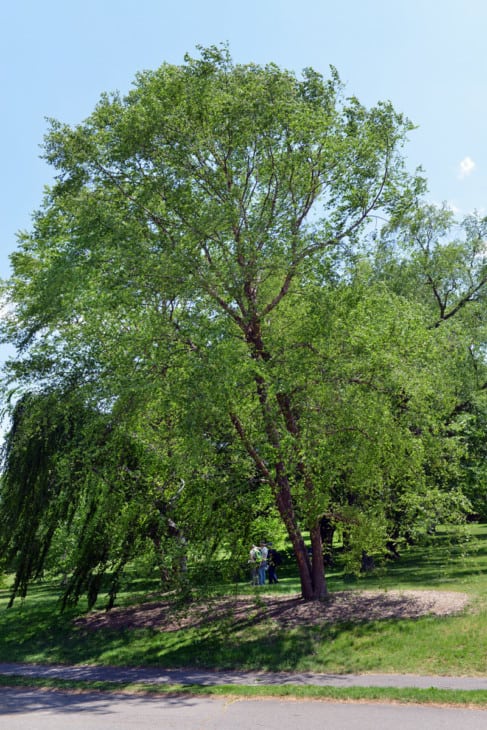
River Birch/ Water Birch/ Red Birch is a deciduous plant that usually goes 40 feet high; however, it can grow up to 90 feet under optimal conditions. Its bark is quite slender, often branching out towards the crown. A distinctive feature of a River Birch’s trunk is its rough protruded scales that cover the entire expanse of the wood. However, that’s more common in the younger species.
It has thick, dark green, wide-oblong leaves with parallel venation that branches out from the midrib. Because a River Birch requires marshy soils, they are mostly found along streams and riverbanks throughout Alabama. However, they are also common in eastern Texas, southeastern Iowa, and northern Florida.
9. Southern Magnolia (Magnolia Grandiflora)
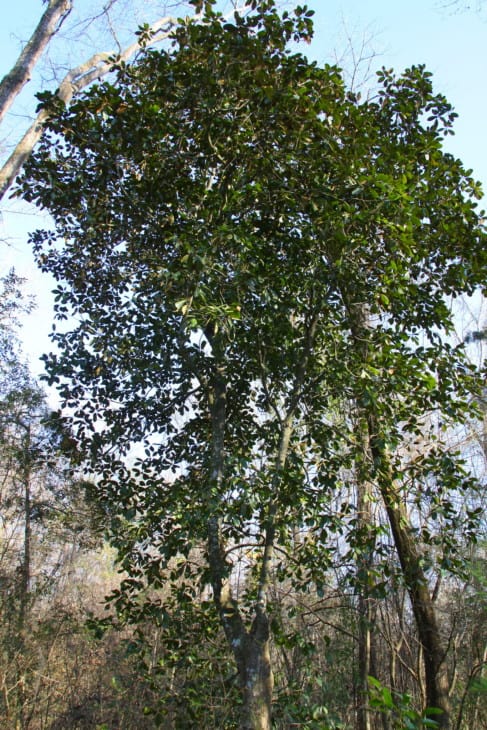
Magnolias or Bull-bay are believed to be ‘iconic southern’ trees prevalent in Virginia, central Florida, and east to west Texas. Of course, they are also found in Alabama. Known for its lustrous large green leaves, the bull-bay tree has an incredibly long lifespan and grows to a height of 60-100 feet.
However, if provided with ideal surroundings, it can go up to 125 feet tall. Its bark is thick, grayish-brown in color, and possesses lenticels- small scaly openings that lend texture to the wood. The evergreen southern magnolia tree is spread statewide in Alabama, growing along streams and rivers.
Related: 30 Great Flowering Trees For Alabama Gardens
10. Osage Orange (Maclura Pomifera)
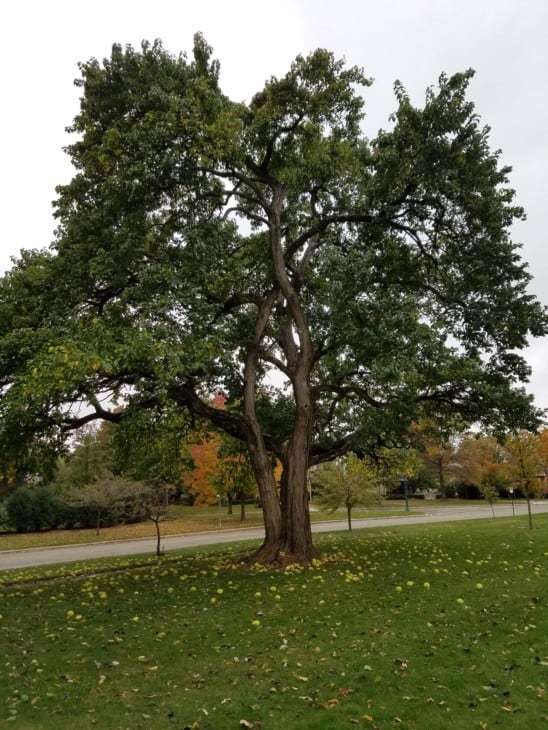
Locally known as hedge-apple, the osage orange tree goes back to the times of American tribespeople. It exists in most American states, including eastern Texas, southeastern Oklahoma, and southwestern Arkansas, along with Alabama. The largest osage orange in America sways in a River Farm in Alexandria, Virginia.
The bark of the hearty-hedge apple tree is thick, dark brown colored with horizontal furrows (tinged in orange color) running across the entire surface. Packed with yellowish-green thick, acuminated simple leaves, osage orange trees take a while to grow. They typically reach a height of 30 feet in almost 40 years.
11. Eastern Redbud (Cercis Canadensis)
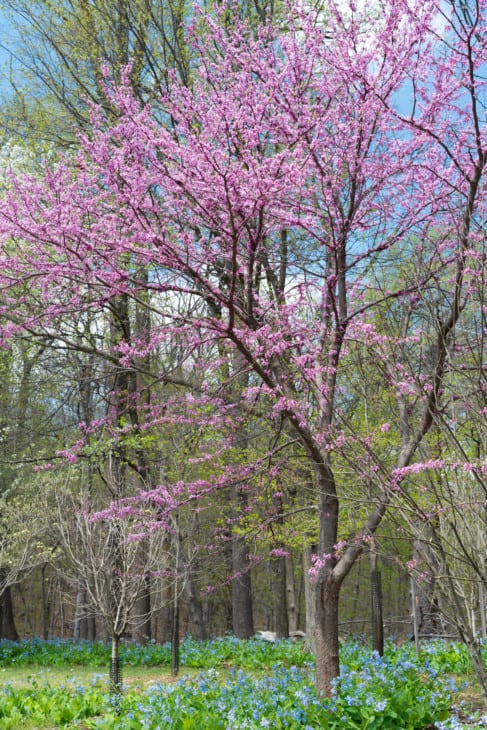
The gorgeous Eastern Redbud heralds the arrival of spring, thanks to its beautiful pink-colored with streaks of lavender here and there, clustered flowers. Aside from Alabama, it’s found in Michigan, New Jersey, and New Mexico.
It is a small tree that only goes up to 15-30 feet and boasts an umbrella-like crown. Apart from the picturesque flowers, heart-shaped foliage is also a distinctive feature of the Eastern Redbud. Cercis Canadensis trees have smooth heavy barks that develop scaly plates with age. They are spread throughout the Cotton State except in the lower coastal region in the south.
12. Sweetgum (Liquidambar Styraciflua)
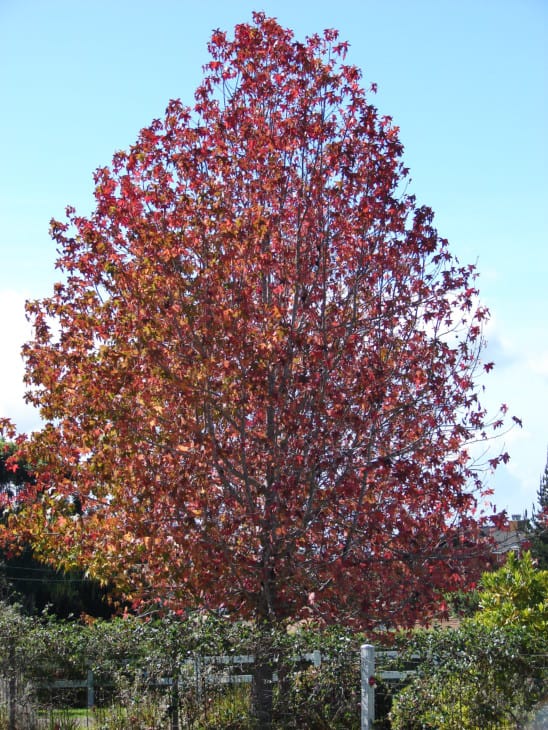
Also known as redgum, American sweetgum, Delta redgum, and liquidambar, sweetgum is a large deciduous forest tree growing up to 80-120 feet high, predominantly found in all of North Carolina. In Alabama, it exists in all counties of the state.
It has dentate, 5-7 lobed palmate-shaped (some might say star-shaped), dark to pale green-colored leaves over a heavy, brown-colored bark with thick crooked furrows running across the wood. The crown of this plant appears as though it’s acuminated at the top; however, it changes appearances throughout different seasons as the leaves shed.
13. Black Cherry (Prunus Serotina)
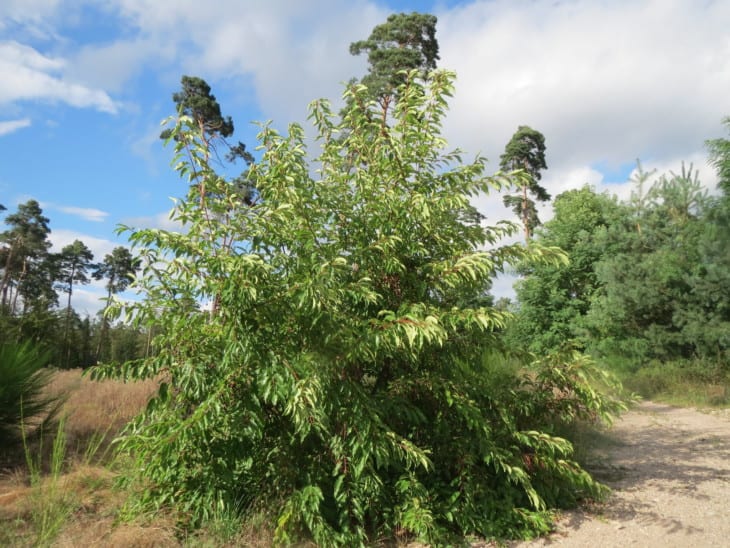
Black Cherry/ Wild Cherry /Wild Black is a deciduous tree found in much of eastern and Central America. It is known for its top-quality wood and lovely white flowers. The average height of a black cherry tree is anywhere between 50-100 feet.
A black cherry’s thin rich-brown bark runs into the crown and gets concealed in oblong, pale green leaves. On the whole, a fully grown plant forms a distinctly conical shape. One unique feature of black cherry is the interwoven scaly plates fissured throughout its bark. This magnificent tree is found in many counties all across Alabama, including Colbert, Walker, Tuscaloosa, Clay, Coosa, Chilton, Elmore, Montgomery, Hale, and Geneva.
14. Black Willow (Salix Nigra)
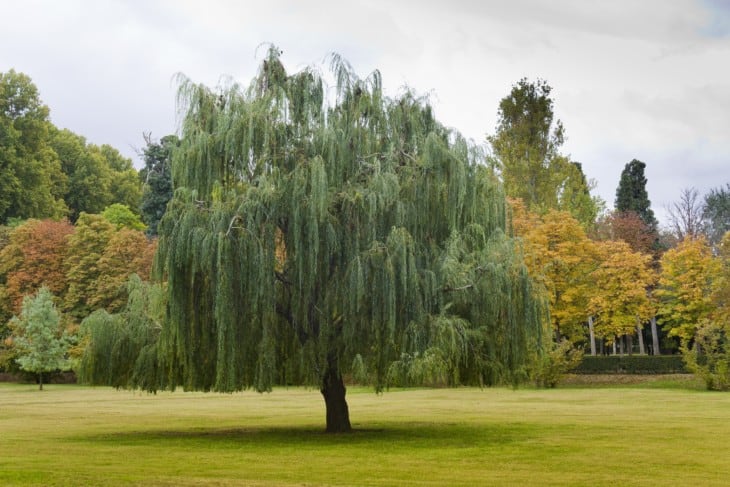
The black willow is a medium-sized tree growing about 30-40 feet on average. It is a fast-growing tree that sprouts in wet soil lands, with its bark branching out at various angles towards the crown. Its leaves are long, narrow, ending in a pointy tip with serrated margins.
A black willow tree has a thick dark brown bark with deeply fissured furrows that becomes much rougher with age. Black willows are found all over Alabama; however, in all of America, they are common in Maine, south to northwestern Florida, west to southern Texas, north to southeastern Minnesota, and west to northern California.
15. Sugarberry (Celtis Laevigata)
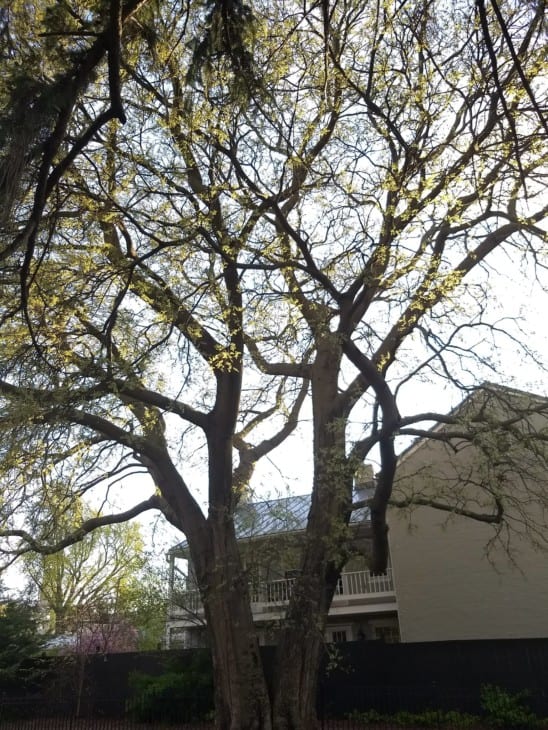
Also known as sugar hackberry, hackberry, and Texas sugarberry, the sugarberry tree is a medium-sized plant that grows up to 60-80 feet tall. It has a thick, brownish-gray bark, mottled with ashy patches with round protrusions running across the entire plain. The leaves of a sugarberry tree are considerably broad yet elongated, ending into a tip at the apex. They are unequally shaped at the bottom, rounded on one side of the central vein, and rather slant on the other side.
Sugarberries are not associated with any particular counties in Alabama; rather, they are dispersed throughout the Cotton State. In the rest of America, they are found in southeastern Virginia, southern Florida, west to central Texas, north to western Oklahoma, southern Kansas, Illinois, Indiana, west of Kentucky and Missouri.
16. American Holly (Ilex Opaca)
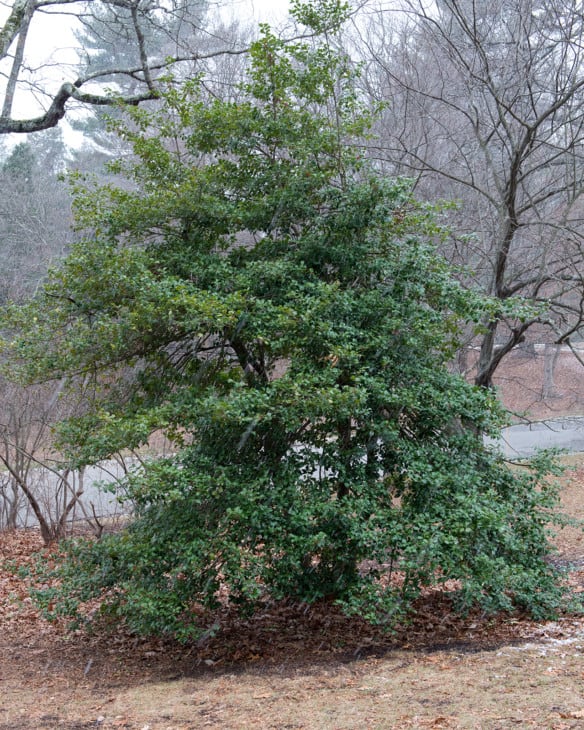
Popularly known as Christmas holly or just Holly, American holly is an evergreen tree native to northern Florida, west to southeastern Missouri, and eastern Texas. In Alabama, it is seen throughout the state. Holly has a light-colored think bark that gets shaggy with age and semi-matte dark green spine-tipped leaves. It is a medium-sized plant with an average height of 20-30 feet, with its bole running up into the crown.
17. Red Mulberry Tree (Morus Rubra)
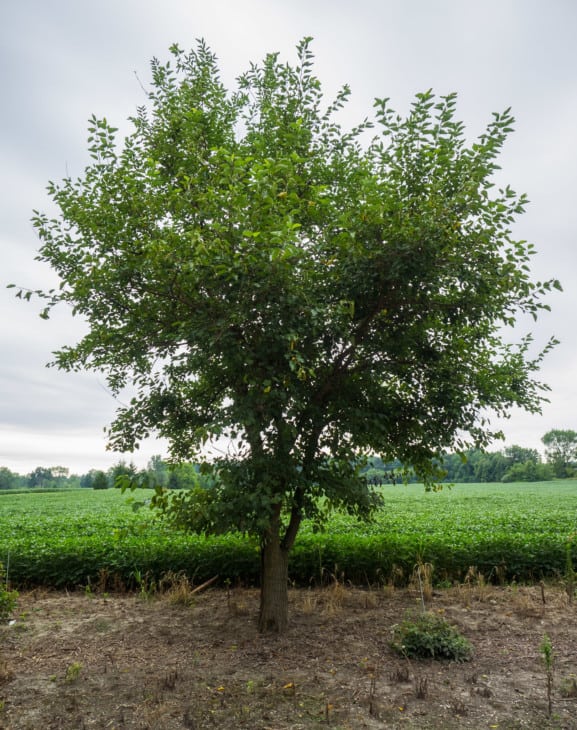
Red Mulberry is a medium-sized perennial tree primarily found in Southern Ontario, east of Massachusetts, southern Florida, west to central Texas, and north to southeastern Minnesota. Its average height lies anywhere between 30-50 feet.
Forming a broad, round crown at the top, the green, palmate-ly ovate, lobed leaves cover a thin dark bark that carries rough scales throughout its expanse. Also sometimes referred to as just mulberry, red mulberries are sparsely scattered throughout the state of Alabama.
18. Common Persimmon (Diospyros Virginiana)
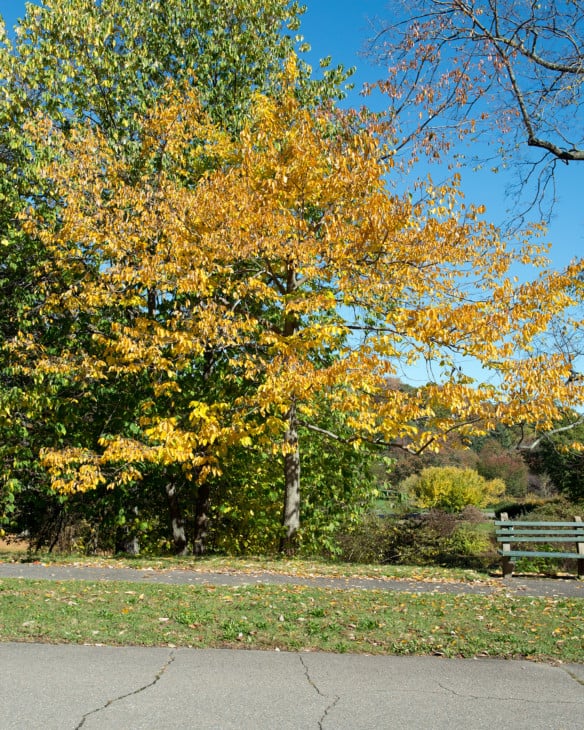
Common Persimmons or only persimmons are a popular plant variety in all of America. However, they are native to Florida to eastern Texas, southern Indiana, southern Iowa, and eastern Kansas, along with Alabama. A common persimmon tree remains low in dry fields, going only up to 15 feet, but it can grow into a 100-ft mighty plant in rich, wet soils. Its deciduous large, ellipsoid green leaves turn yellowish-orange in the fall.
The bark of a persimmon tree is thick and dark, with prominent fissured squares covering the plain. This perennial plant is known to attract wildlife because of the plum orange fruit that dangles from its branches. Animals that mostly chomp on the delicious persimmon fruit include skunks, deer, opossums, birds, and raccoons.
19. Sassafras (Sassafras Albidum)
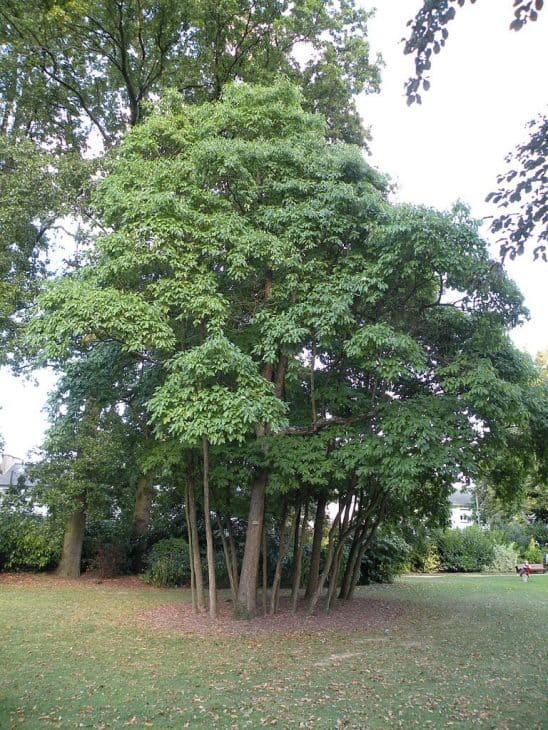
Most people only know sassafras as the main ingredient in brewed root beer, but there is a lot more to know about this deciduous plant. Native to southwestern Maine to Michigan, southeastern Kansas to Florida, and eastern Texas, sassafras is widely spread in the north of the Alabamian Black Belt. It has three-lobed bright green leaves that fall over a dark mahogany-brown prominently fissured bark. The rather medium-sized sassafras reaches only 30 to 35 feet and is famous for its aromatic essence among flavorists.
20. Sycamore (Platanus Occidentalis)
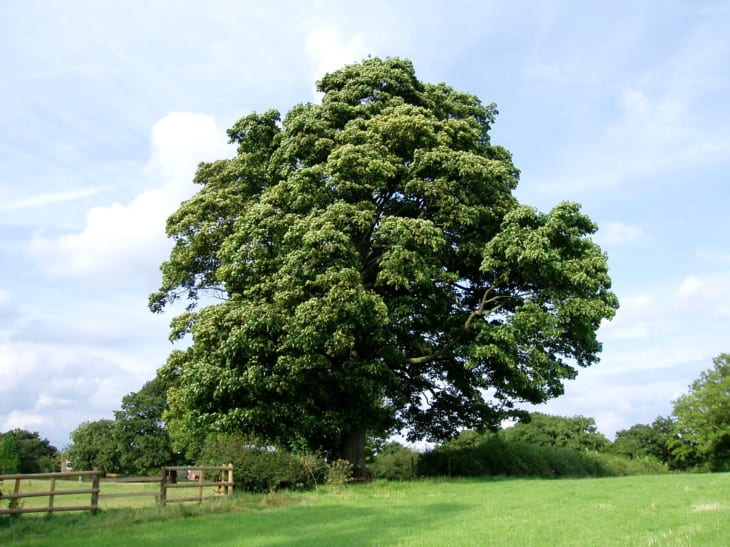
Sycamore, buttonwood, American planetree, or occidental plane tree is a deciduous plant that stands out because of its uniquely textured bark as it glows in the fall season without foliage. It is readily found in forests and waterways all over America.
It is considered the largest tree in Eastern North America, although its maximum height is 100 feet. The thick, brown bark of a sycamore tree has an interesting look with square-shaped scales protruding from the wood. This textured appearance becomes more prominent in the fall season when the 3-5 lobed palmate leaves fall off. In Alabama, Sycamore is almost evenly spread all over the state, but it’s more noteworthy in longleaf pinelands.
21. White Oak (Quercus Alba)
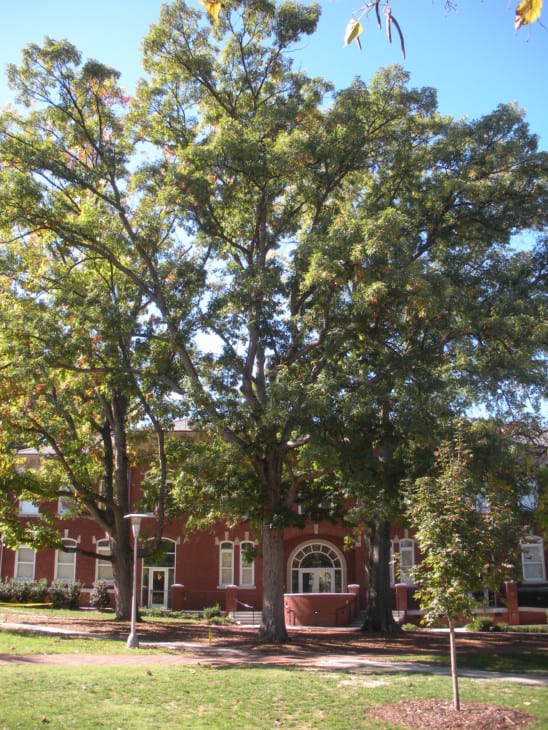
A member of the beech family, white oak is also called northern white oak, eastern white oak, stave oak, ridge white oak, forked-leaf white oak. It is native to several American states including, west to Minnesota, south to Texas, east to Florida, and north to Maine.
White oak forms a wide crown over a straight bark with scaly plates, which spreads into large horizontal coarse branches. It has an average height between 80 and 100 ft. The deciduous rounded-lobed leaves of a white oak plant have an obovate appearance with a broad apex. They are slightly shiny green during the better part of a year but turn burgundy in fall.
Related: 22 Types Of Oak Trees In Alabama
22. Black Walnut (Juglans Nigra)
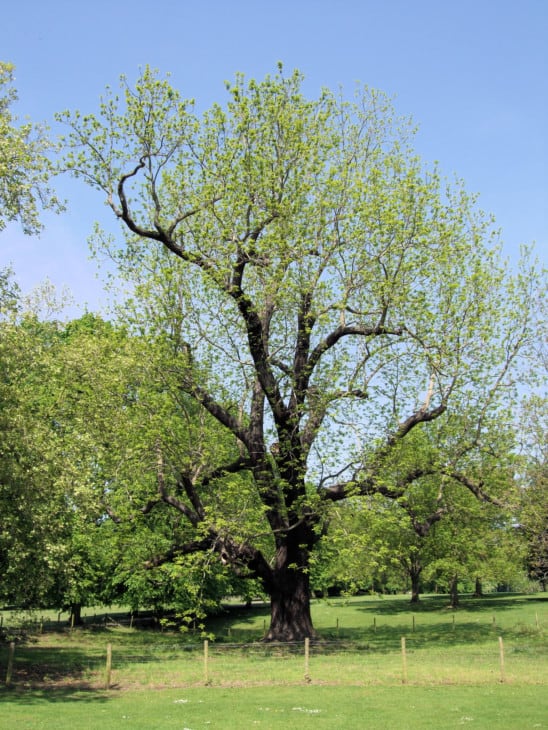
A large and rugged perennial plant, the black walnut goes 50-75 ft tall, and in ideal conditions, it can turn into a 150 ft high tree. Found primarily in Maine, west Oklahoma, central Texas, northwestern Florida, and west to southern Minnesota, black walnuts are prevalent in most Alabama.
The foliage arrangement of black walnut trees comprises of multiple leaflets along a central axis with their midrib off-center. Juglans Nigra’s large, sturdy bark fissured in wrinkly furrows spreads into wide branches before running up to the umbrella-like crown.
23. Pecan (Arya Illioniensis)
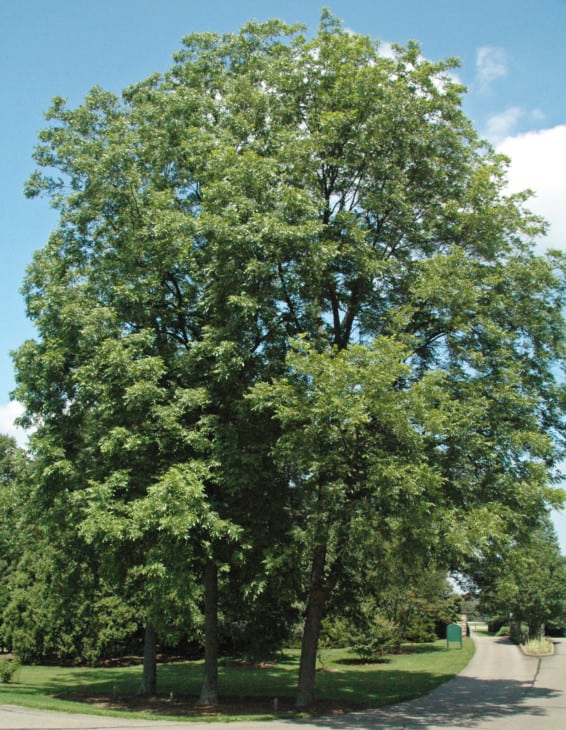
Pecan nut, pecanier, pecan-tree, or simply pecan, known as one of the most loved pie flavors in America, is one of the largest hickories, going up to 70-100 feet high. It’s prevalent in multiple American states, including Alabama, Texas, southeastern Indiana, Illinois, and southeastern Iowa.
A pecan tree is supported by a robust, smooth dark bark that spreads into stout branches before running into the oval-shaped crown. Its deciduous leaves are pinnately compound with 11-17 leaflets each. The leaflets are broader towards the end, and their midrib is off-center.
24. Flowering Dogwood (Cornus Florida)
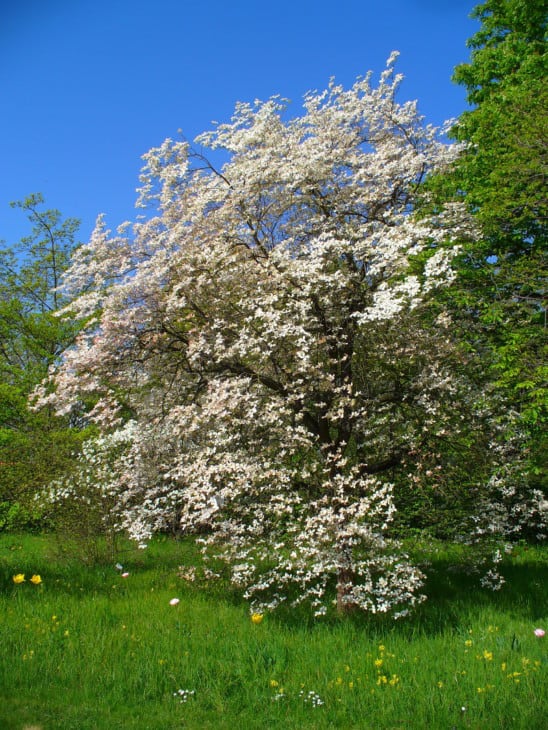
Native to North America, the flowering dogwood is considered one of the most magnificent plants in the country. It is a medium-sized tree with an average height of anywhere between 20-40 feet.
Commonly known as dogwood, boxwood, flowering cornel, arrow-wood, a flowering dogwood’s hard bark separates into horizontally-tiered branches before running into a widely spread crown. Its large green leaves fall in the fall, creating a yellow-orange leaf litter.
Related: Are Dogwood Berries Poisonous?
25. Yellow Poplar (Liriodendron Tulipifera)
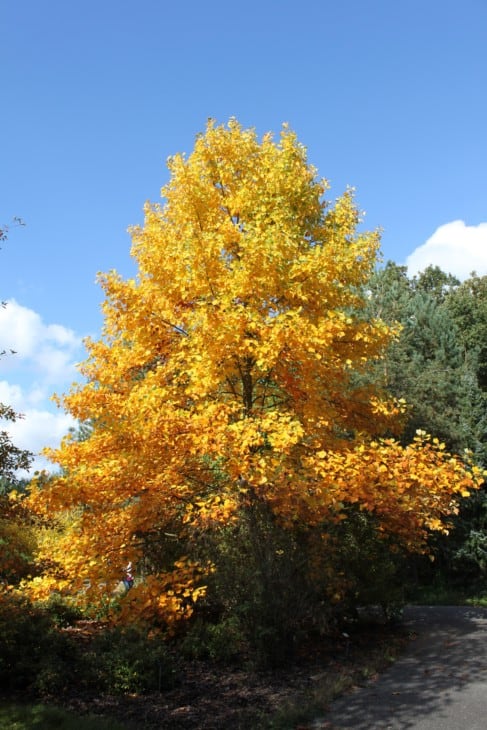
Also known as the tulip tree, Poplar, tulip-poplar, white-poplar, whitewood, yellow Poplar is one of the tallest eastern hardwood plants; it reaches a height between 80-100 feet on average. Its bark is thick hard, and prominently furrowed throughout the straight plain.
The fast-growing yellow Poplar boasts palmate-ly spread 5-7 lobed green leaves. It is heavily present in the remnants of the Appalachian Mountains, like Piedmont in Alabama. In statewide distribution, it is found in North Carolina, Louisiana, Michigan, Tennessee, Kentucky, and east to northcentral Florida.
26. Buckeye (Aesculus)
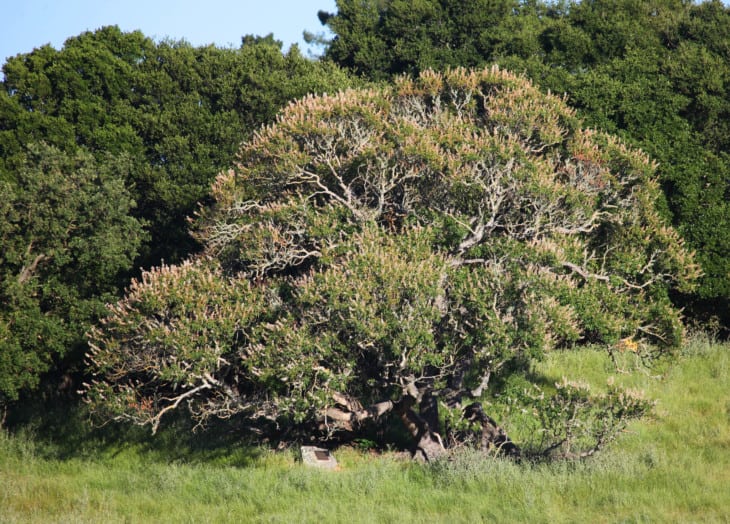
Buckeye is an indigenous plant of North Carolina, Florida, west to central Texas and Illinois. It’s also prevalent in Alabama, particularly in Madison, Jackson, Colbert, Morgan, Winston, and other green counties.
Buckeye has different species, most popular or widely seen of which are Ohio and Yellow buckeye. This plant is pretty much a shrub, so its bark is only a few inches tall but has panicles. The foilage arrangement of a buckeye plant is composed of dark-green pinnately-arranged leaves with five leaflets (joined at the stem) in each.
27. Bitternut Hickory (Carya Cordiformis)
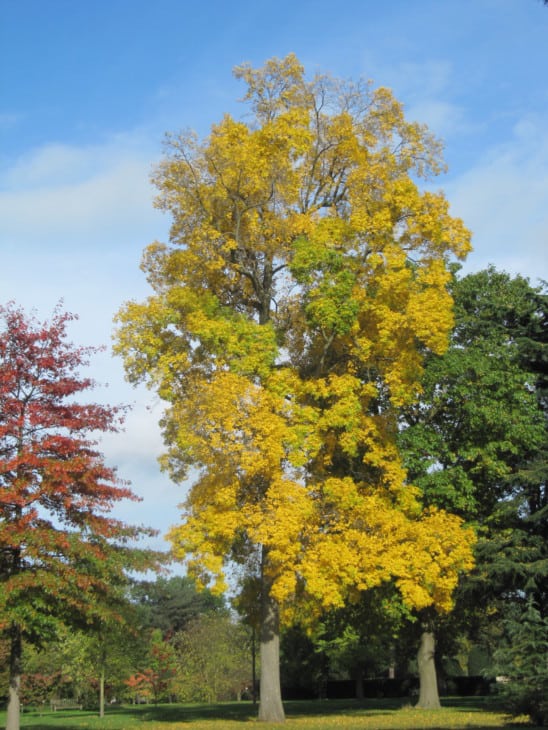
Bitter Hickory is generally referred to as said epithet, but it also has many other names, such as swamp hickory, pig hickory, pignut, bitter pecan tree, bitter pignut, white hickory, red-heart hickory. It is a slender perennial tree with ascending limbs and a pale-brown straight furrowed bark running up to the crown.
This hickory variety is considered to be one of the largest in the family, reaching up to a height of 50-100 feet. Its leaves are pinnately arranged and shed during the fall season. Bitternut hickory is native to southwest New Hampshire, south Queensland, Central Michigan, south to northwest Florida, east Texas, central Oklahoma, and eastern Nebraska. In Alabama, it’s supposedly concentrated in Montgomery and the central state.
28. White Ash (Fraxinus Americana)
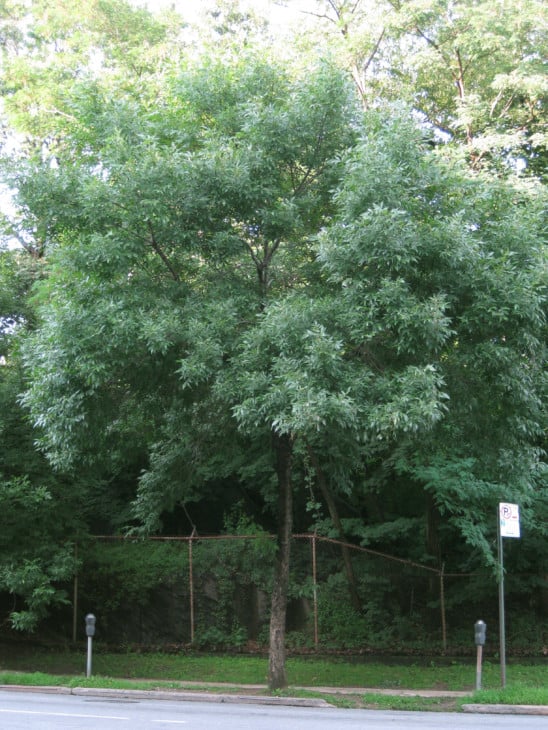
Biltmore ash, Biltmore white ash, small seed white ash, or just white ash is a large deciduous canopy tree, with a thick brown, gray, tinged with red deeply fissured bark. It has an average height between 75-120 feet. The pinnate leaves in a Biltmore ash plant are yellow in color but turn purple during the fall season. It is native to southeast Nebraska, Florida, and central Texas. It’s also scattered all across the Cotton State.
29. Eastern Hophornbeam (Ostrya Virginiana)
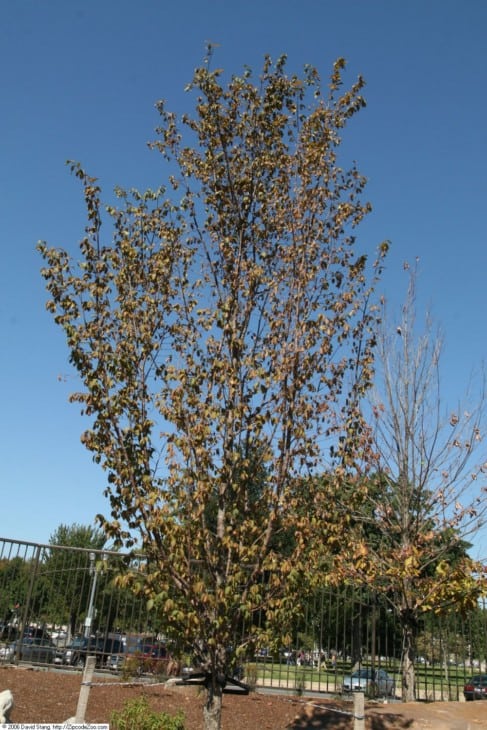
Popularly known as American Hophornbeam, Eastern Hophornbeam is a short tree around 20-40 ft high supported by thin bark that spreads into scaly plates. Its oblong leaves are dentate with a parallel venation system running off a central midrib.
American Hop-hornbeam is well-distributed all over Alabama. On the whole, in America, it is prevalent in Florida Panhandle, eastern Texas, eastern Kansas, and eastern North Dakota, among a few others.
30. Sourwood (Oxydendrum Arboreum)
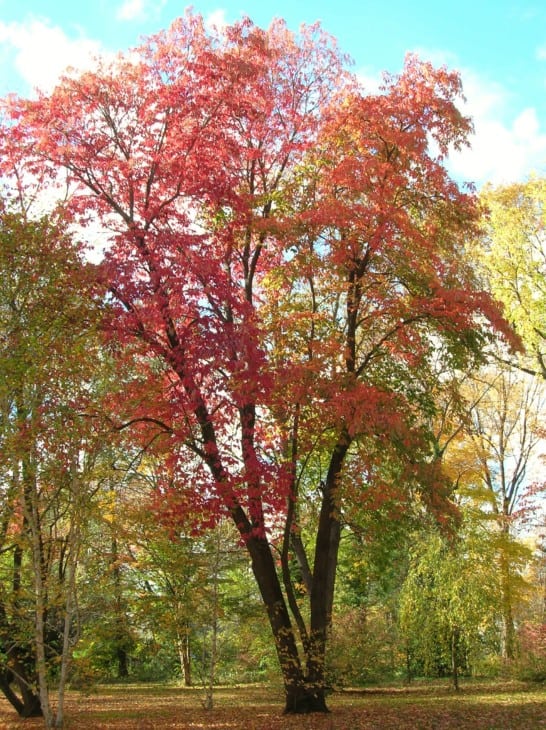
Sourwood is a flowering plant found in southwest Pennsylvania, southern Ohio, southern Indiana, south to southeastern Louisiana, and the coastal region of Mississippi, Alabama, and northwest Florida. It is also seen in the west to western Kentucky and Tennessee and the Delta in Mississippi; however, it’s native to southeastern North America.
The Lily-of-the-Valley deciduous plant turns into a tall tree with a columnar crown and straight trunk. Its average height remains between 30-70 feet. The bark is gray in color, tinged with red has deep fissures running all across the surface. Sourwood’s simple oblong leaves with acuminated tips turn deep dark red in the fall.
31. Eastern Hemlock (Tsuga Canadensis)
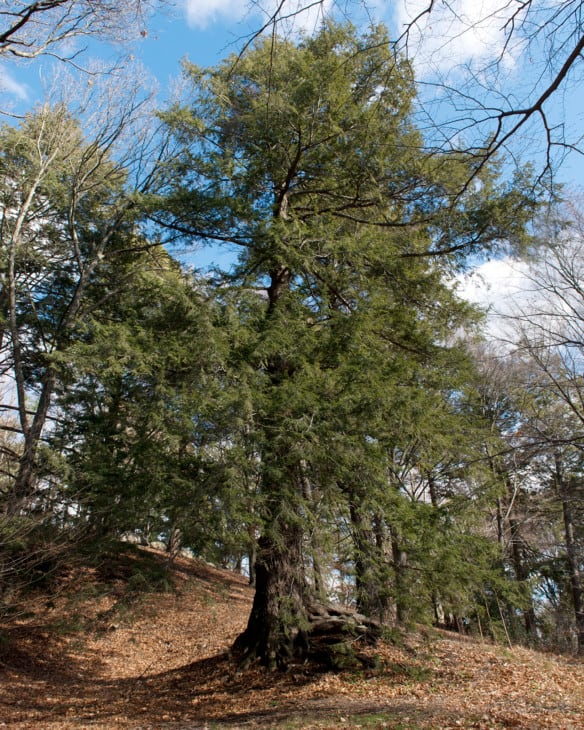
The evergreen Eastern Hemlock is a pyramidal tree with long gangly limbs and needle-like dark green leaves. It possesses a conical crown with horizontal branches that droop close to the ground. It typically grows up to 40-70 feet over a straight, dark-brown bark. Eastern Hemlock is indigenous to Minnesota, Georgia, Maryland, and Alabama over mountain slopes and rocky ridges.
32. Box Elder (Acer Negundo)
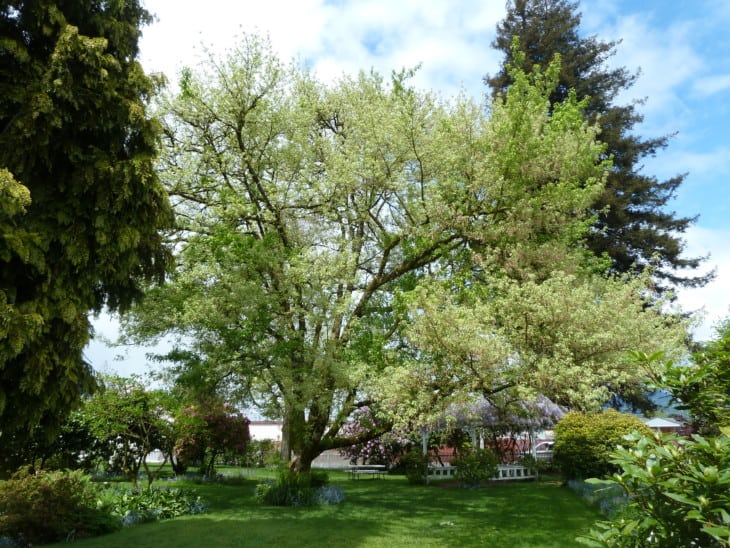
Also known as box elder maple, ash-leaved maple, ash leaf maple, red river maple, Fresno de Guajuco, box elder is a small to medium-sized deciduous tree found in moist woodland, floodplains, and streambanks. It is native to Maine, Florida, east Texas, north California, Colorado, and Alabama.
This perennial plant typically reaches a height of 35-50 feet over a straight bark with spreading branches. Its foliage is light green, boasting a compound arrangement with minimal fall shedding.
33. Downy Serviceberry (Amelanchier Arborea)
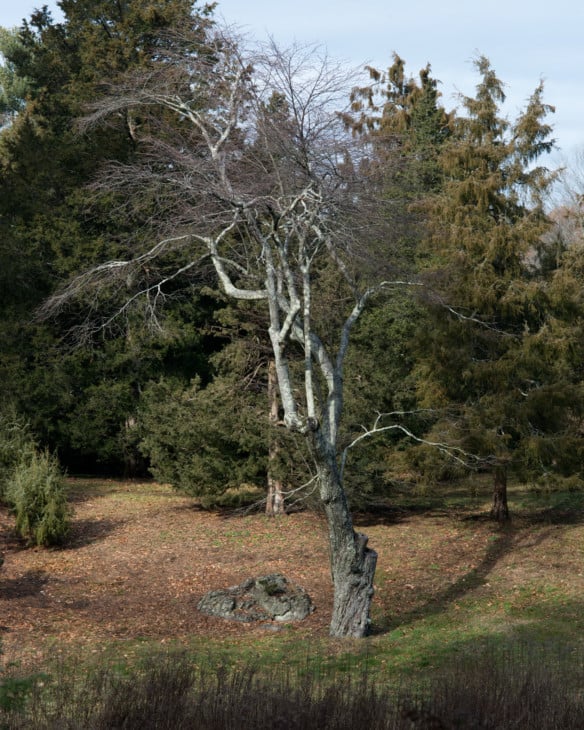
Downy Serviceberry is a shrub growing up to only 15-25 feet. On rare occasions, it might become 30 feet tall. Predominant in the west to east Minnesota, east Nebraska, Florida, northeast Texas, this deciduous tree is also scattered across Alabama.
Downy has many other names such as common serviceberry, downy serviceberry, shadbush, juneberry, junebush, shadblow, Sarvis. It has a somewhat straight bark with longitudinal fissures throughout the wood. The leaves on a downy serviceberry plant have tiny, woolly hairs on them at a young age, but the tenuous furs disappear as they grow. In fall, a downy tree’s foliage turns wine-red.
34. Common Hackberry (Celtis Occidentalis)
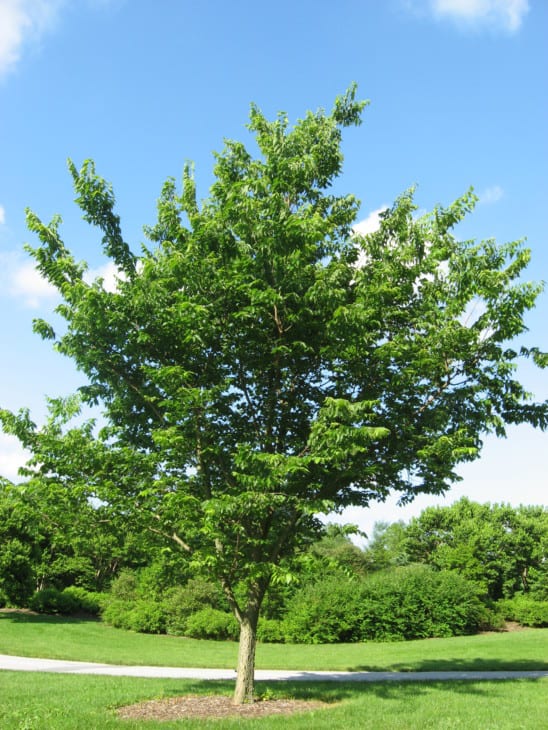
This 60-100 ft. tall deciduous tree has many other monikers such as northern hackberry, American hackberry, nettle tree, beaver wood, false elm, but the most widely used is common hackberry. A common hackberry has a broad irregular shaped (seldom round) crown over a rough bark with drooping branches- often referred to as a witch’s broom. Its dull-green simple foliage every so often develops unsightly round galls caused by a tiny jumping plant lice.
American hackberry is scattered across many states in the United States, mainly in New Hampshire to Wyoming, Georgia, Arkansas, and north to west Texas. Of course, it is a common tree in Alabama as well.

